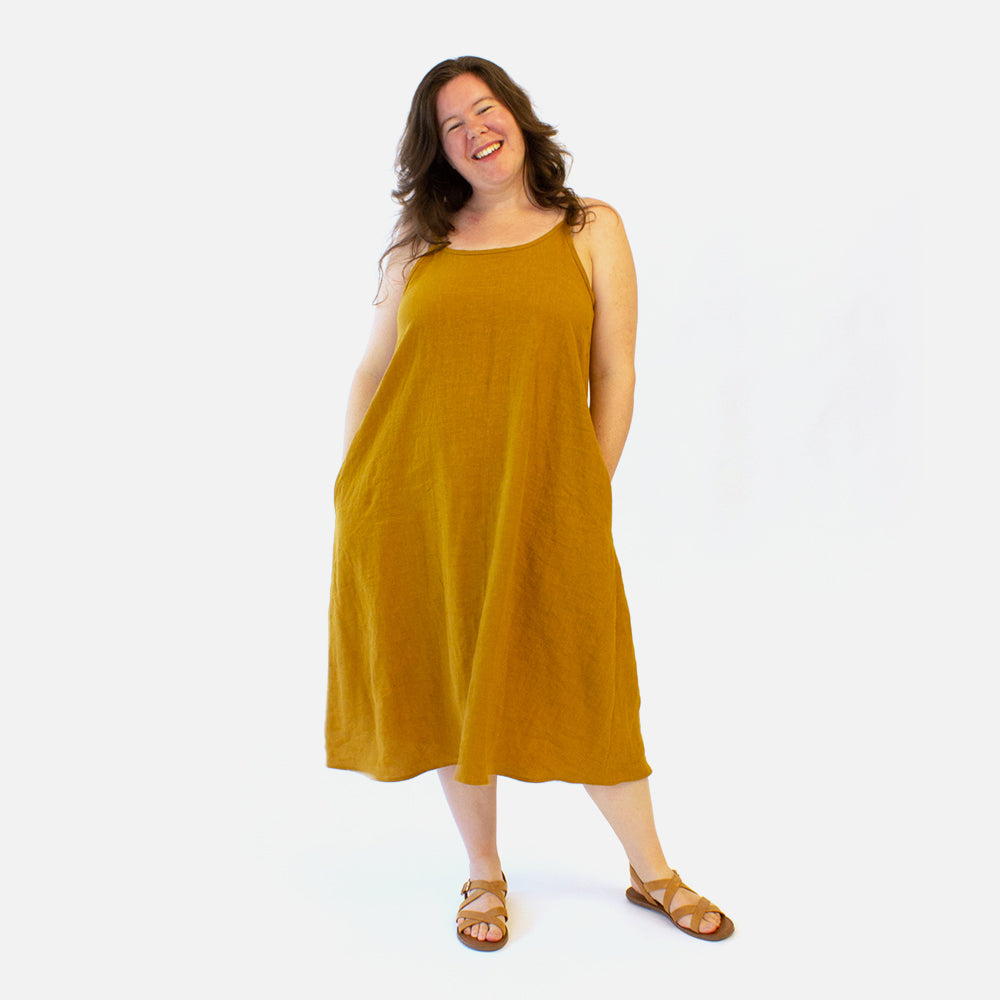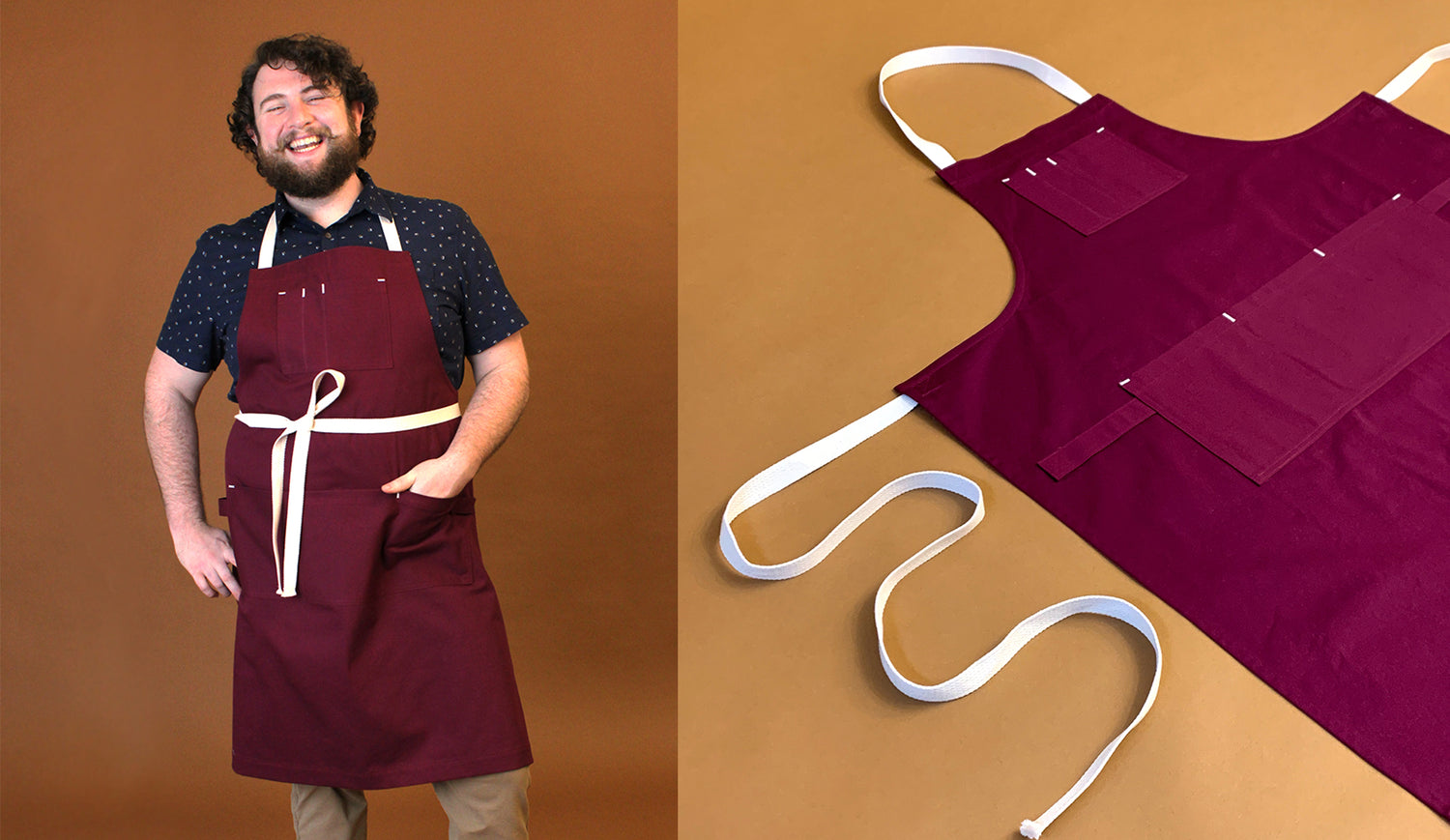
Despite the ongoing debate among millennials, low-rise bottoms are making a comeback! However, it's important to remember that fashion trends should never dictate your personal style. If you're not a fan of the low-rise trend, that's perfectly fine. But for those who are, we're here to guide you on how to do a low rise adjustment on the June and Shorts and Pants pattern.

You can make June mid-rise or low rise or any rise you like! And the best part? This technique can be applied to other pant patterns, like Arden, too. For pants like Arden that have slash pockets, refer to this blog post instead for pocket adjustment steps 6-10 .
Note: this hack is shown on the regular view of the June Shorts and Pants and not the petal view. Although it is possible to make the petal view low rise, it is more involved as the leg overlap notches will also need to be adjusted, which will not be covered in this blog post.


How Much to Lower
Although it would be nice to have an exact amount to go off from, it is a matter of preference and what you like on your own body. Ideally, you already have a pair of low-rise pants that you like the fit of to gauge how much of an adjustment to make.
If you don’t, put on a pair of pants and place a pin where you would like the top of the finished front waistband to be. If you have an existing pair of June pants or shorts to try this out—perfect! But if you haven’t made them yet, a good-fitting pair of pants will do.
Next, take the pants off and lay them out so that the crotch seam is exposed. Measure the front crotch length from the inseam intersection to where your pin is. This will be your finished front rise. Write it down.
Let’s Do Some Math
Now we have the finished front rise measurement. However, we need to take into account that this measurement includes the waistband width. To get the front rise measurement for the front pant leg alone, we need to subtract the finished waistband width from it. The finished waistband width is 1.6” (4 cm) for the June Shorts and Pants. Once you do the math, you will have the finished front leg rise measurement. Make sure to write it down.

Pattern Pieces Needed
For this hack you will need Front Leg (7), Back Leg (8), Pocket (2), Front Waistband (4) and Back Waistband (5) pattern pieces. You will also need some tape, scissors, a ruler, extra paper and a pen or pencil.

Pattern Adjustments
Front Leg
1. We will start with the Front Leg (7). Draw in seam allowances at the front crotch, inseam, and top part of the side seam. The June Shorts and Pants pattern has a ⅝” (1.6 cm) seam allowance.

2. Measure the finished front leg rise along the drawn seam allowance line at the front crotch seam. Start at the intersection of the front crotch and inseam and work up towards the waistband. Make a mark.
Measure the distance from the mark you just made to the top edge of the pattern. This will be your adjustment distance. Make sure to write it down. We find it helps to write that down on the pattern, next to the seam/part of a seam you are measuring.

Draw a new waistband attachment seam line the adjustment distance away from the original waistline.
3. Measure the top edge of the front waistband attachment seam along the line you just drew, starting and stopping at the seam allowances on either edge of the pattern. This is your front waistband length, write it down so that you don’t lose it.

Add a ⅝” (1.6 cm) seam allowance to the top of the front leg pattern.
Back Leg
4. Mark the seam allowances on the side seam and crotch seam of the back leg. Again, the seam allowance for the June pattern is ⅝” (1.6 cm).

5. Measure the adjustment distance down from the top edge of the back leg pattern piece. Draw a new waistband attachment seam line.
Measure the back waistband length along the waistband attachment seam between the side and crotch seam allowances.

Add ⅝” (1.6 cm) seam allowances to the top of the back leg pattern.
If you want to skip the pockets, continue on to the waistband adjustments in step 12.

Pockets
The pocket pattern piece is vertically mirrored along the center. Make adjustments to one side only and then fold the pocket piece along the center to transfer the adjustments to the other side.
6. On the pocket piece, measure out the adjustment distance along the top edge. Draw a new pocket seam line. Add a ⅝” (1.6 cm) seam allowance along this edge.

7. Check where your top pocket notches are. If they are below the new pocket seam line, you are good to cut your new pattern piece out. Proceed to step 10.
8. If the pocket notches are above the new pocket seamline, you will need to move them down. Move the top notch down so that it is about ½” (1.3 cm) underneath the top pocket seam line. Repeat for both front and back pant legs, moving the top pocket notches down

If the top pocket notch was less than 1” (2.5 cm) above the top pocket seam line, proceed to step 10.

9. If the top pocket notch was more than 1” (2.5 cm) above the top pocket seam line, you will need to adjust the bottom notch and the shape of the pocket at the bottom.
Tape an extra piece of paper to the bottom of the pockets. Working with one side of the pocket pattern piece, extend the side line of the pocket down and the bottom of the pocket sideways to meet the new side line. Do not worry about repeating the steps on the other side of the pocket piece yet.
Measure at least 5” (12.5 cm), but no more than 6” (15 cm) down from the top notch and mark the new bottom notch.

Measure another ⅝” (1.6 cm) down and make a mark. Draw a new curved line, blending it into the original. If it does not make sense to draw a new curved pocket edge, you can leave the pocket edge straight too.
Transfer the new bottom notch to the front and back leg pattern pieces.
10. Fold the pocket piece along the center notches and transfer the adjustments from one side to the other. Cut the new pocket piece out.

Waistband
Next, you will need to adjust the waistband pieces so that they fit your new front and back leg pattern pieces.
11. Tape extra paper to each front and back waistband pattern piece's vertical edge. Extend both waistband pieces' top and bottom horizontal edges by a couple of inches (~5 cm).

12. Starting from the center notch on the front waistband, measure the front waistband length out to one side. Make a mark. Add the ⅝” (1.6cm) seam allowance and make another mark. Repeat for the other side. Draw new side edges at the seam allowance marks and move the notch as well.

Repeat the step above for the back waistband making sure to measure out the back waistband length instead.
That’s it! You are now ready to give your new low-rise June shorts or pants a try. As always, we highly recommend sewing a muslin after making any adjustments to the pattern. Happy sewing!







